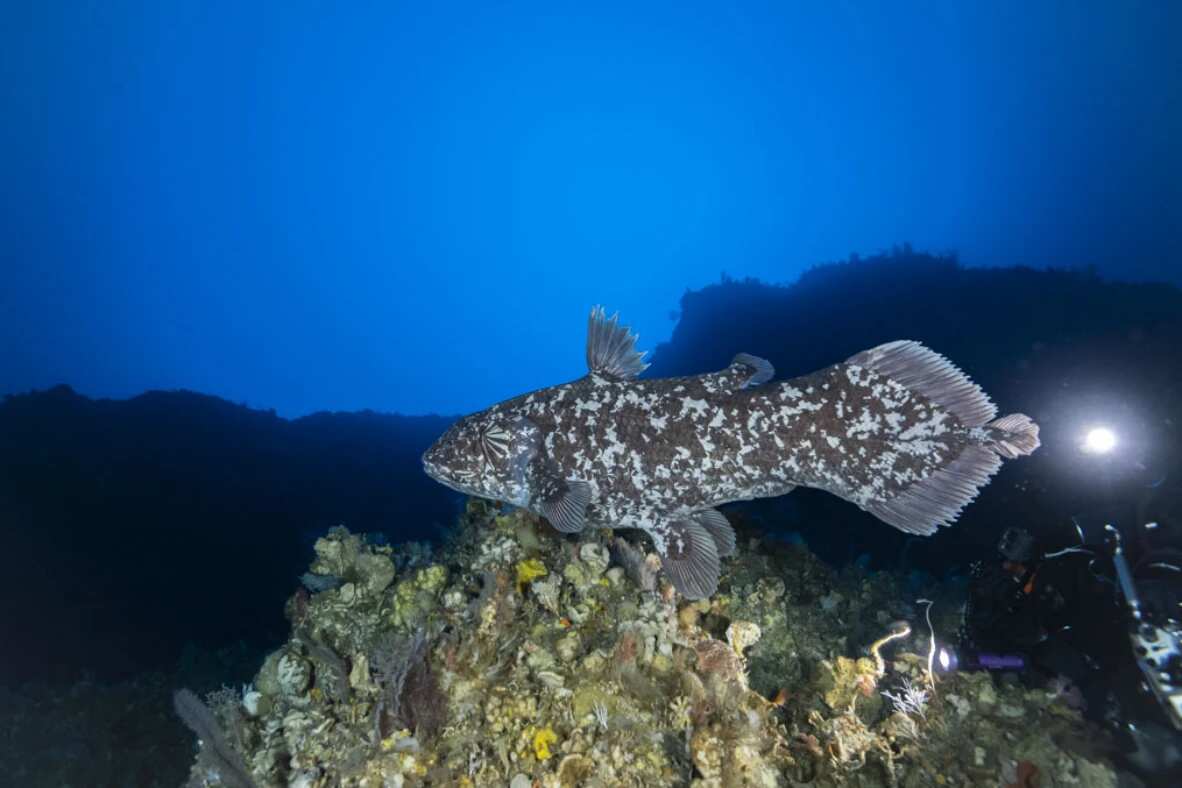

A rare “dinosaur fish,” once believed to have disappeared 70 million years ago, has been filmed in the wild by divers in the Indonesian archipelago. The Indonesian coelacanth (Latimeria menadoensis) was captured on camera in its natural habitat, marking a breakthrough for marine exploration.
The discovery was made in October 2024 during a deep-sea mission led by Alexis Chappuis of UNSEEN Expeditions. Using special breathing equipment, Chappuis and fellow diver Alexandre Leblond descended to 152 meters along a volcanic slope in the Maluku Islands, where they spotted the elusive creature at a depth of 144 meters.
The coelacanth was first rediscovered off the coast of South Africa in 1938, when a fisherman accidentally caught one in his net.
Coelacanths were once thought long-extinct. The first live example, Latimeria chalumnae (named for discoverer Marjorie Courtenay-Latimer) wasn’t known to science until 1938.
The species was known to local fishermen far earlier, but considered worthless due to its unpleasant taste pic.twitter.com/93wxhWwMZ1— Natural History Museum (@NHM_London) September 6, 2020
The fish was known only through fossils and believed to have vanished alongside the dinosaurs. Its unexpected appearance shocked scientists and was considered one of the most important natural history discoveries of the 20th century.
In 1997, marine biologists Arnaz and Mark Erdmann found a second coelacanth species at a fish market in Manado, North Sulawesi, Indonesia.
Formally described in 1999 as Latimeria menadoensis, the Indonesian species was known mainly through bycatch records and sightings using submersibles and remotely operated vehicles (ROVs). Until now, no diver had ever photographed a living Indonesian coelacanth in the wild.
During two separate dives, divers observed the same individual coelacanth hovering above a large rock, gently moving with slow fin motions.

Unlike past assumptions that coelacanths rest in caves during the day, the fish was found swimming out in the open, supporting newer studies that suggest more flexible behavior.
Both encounters were brief—five minutes during the first dive and eight during the second—before the divers began their long, careful ascent. At such depths, the journey back to the surface required hours of slow decompression to avoid serious health risks.
Today, the Indonesian coelacanth is listed as “vulnerable” on the IUCN Red List, while its African cousin remains “critically endangered.” With their long life spans, slow growth, and late maturity, coelacanths are highly sensitive to environmental changes.
Chappuis and his team have chosen not to reveal the exact dive site to protect the newly found population from threats, including unregulated tourism. They hope their discovery will inspire stronger conservation efforts in Indonesia’s rich but fragile marine ecosystems.
The findings were published in the journal Nature under the title “First record of a living coelacanth from North Maluku, Indonesia.”
